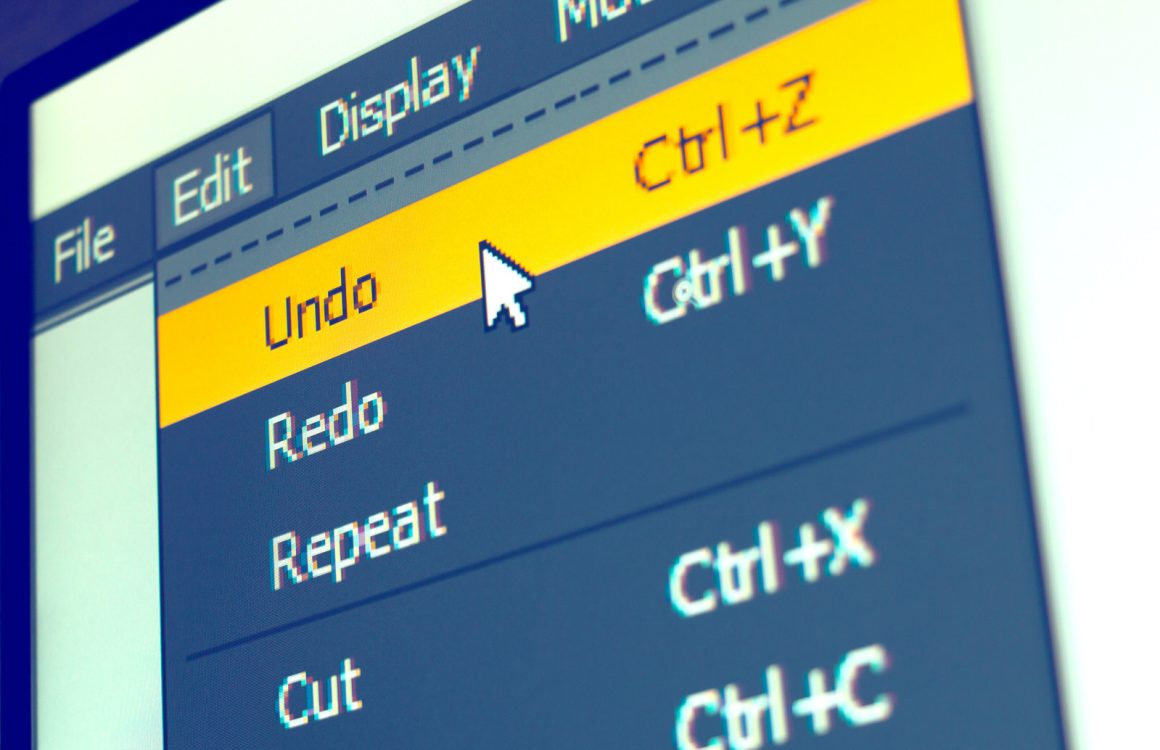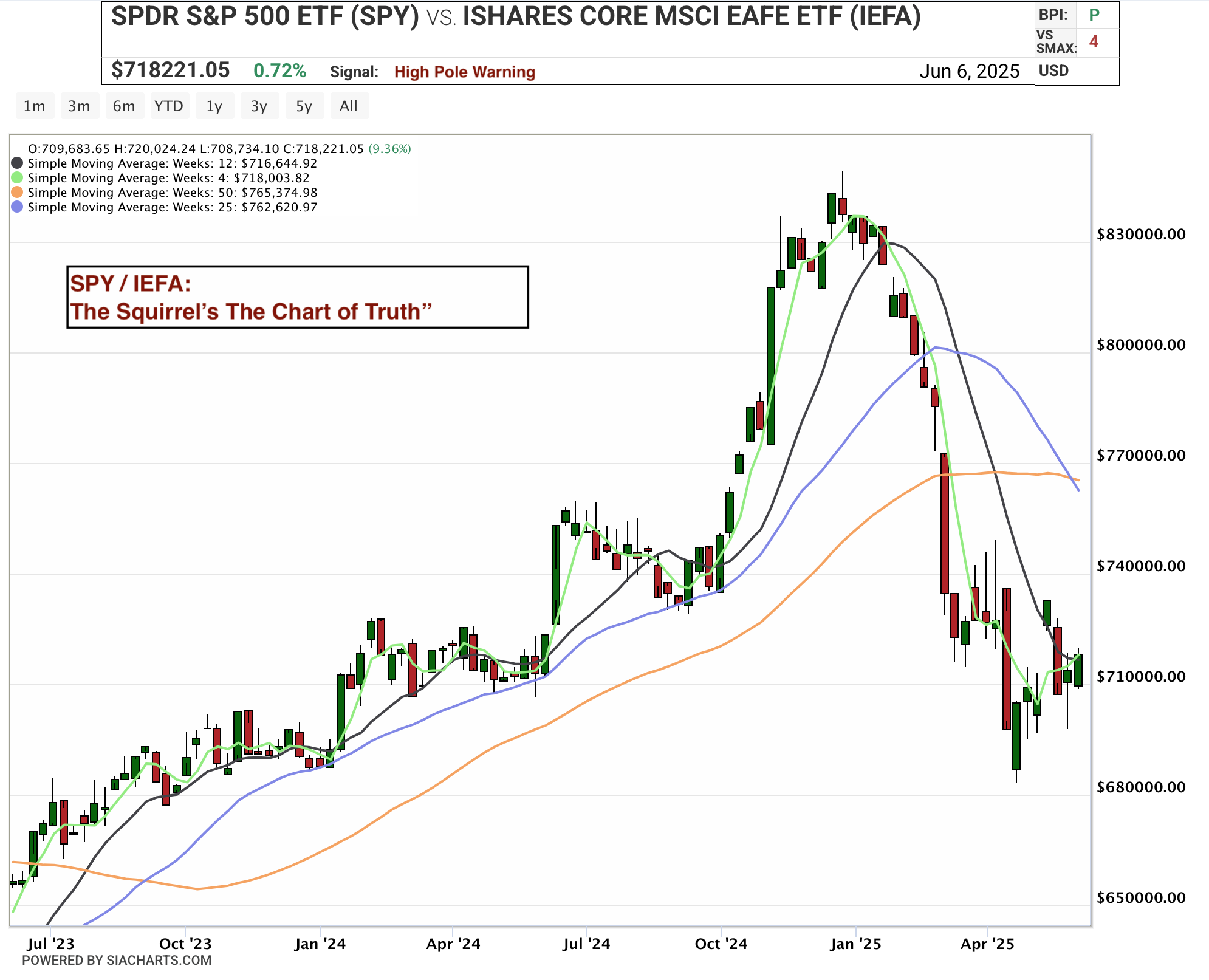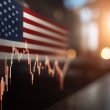“You’ve got $9 trillion worth of European pension money sitting in US equities… try parking a trillion dollars of assets into European equity markets, even the big stuff, you’re going to leave a mark.” – Rupert Mitchell
If you’re a European pension fund manager sipping your morning espresso in Paris or Amsterdam, you might want to take a long, hard look at what Rupert Mitchell—Blind Squirrel Macro’s founder—calls “the chart of truth.” Because what’s coming next isn’t just a rebalancing. It’s a full-blown capital migration, and the exits are looking narrow.
Mitchell recently joined Excess Returns'1 Matt Ziegler for a spirited conversation that kicked off with 90s cartoon nostalgia and ended with a quiet bombshell about Meta potentially walking away from the AI arms race. In between, he dropped sharp, unsparing insights about systemic flows, market leadership, and the blind spots professionals are still clinging to.
The “Sell in May” Meme That Made You Look Stupid
So much for seasonal wisdom. This year’s “sell in May” crowd got it dead wrong. As Mitchell put it, the pros “got freaked out by April’s volatility,” clocked out early for summer, and “went to the beach.” Meanwhile, retail investors bought the dip—again—and crushed it.
“They’re back. They are so back,” Mitchell deadpans. And while Wall Street professionals are getting outperformed by their moms (again), career risk is quietly taking root beneath the surface.
Why? Because markets aren’t just reacting to fundamentals anymore. They’re moving on autopilot—driven by volatility control strategies, 401k flows, and passive indexing inertia. So while traditional investors sat sidelined, the machines pushed prices higher.
The $9 Trillion Problem Nobody’s Prepared For
Here’s where it gets real. Mitchell spotlights one chart that tells the entire story: the SPY vs. MSCI ex-US. It’s been a one-way trip for 12 years. But that ride might be over.
The Chart of Truth
“Traditionally, when there was a wobble in markets, everyone rushed into US dollar cash,” Mitchell explains. That currency tailwind used to help global investors paper over their losses. Not anymore.
And now, $9 trillion in European pension assets—roughly the size of the entire US 401k and IRA complex—is rethinking its U.S. exposure. “If you support the view that passive flows have been the primary driver of markets over the last five to eight years… dialing it back even a bit could make waves,” he warns.
This isn’t about fleeing—yet. It’s about slowing the firehose of capital that’s been propping up U.S. equity valuations for over a decade. And as Mitchell points out, regulators might soon force local reinvestment. “Capital wars,” he calls it. Under the guise of “risk management,” governments could soon start nudging (or pushing) pensions to repatriate their capital.
The Highlander, the Rent Seeker, and the Risk You Can't Hedge
Speaking of concentrated bets, Mitchell’s breakdown of the S&P’s current leadership is nothing short of surgical.
“Nvidia alone accounted for 22% of the S&P 500’s gains in May,” he says, dubbing the company “The Highlander”—because there can only be one.
This kind of top-heavy rally, he warns, has left professionals playing catch-up for three straight years. “That calls into question a whole industry structure.”
And don’t get him started on Apple. Once a fan, Mitchell now calls it “the Cupertino Rent Seeker”—a company living off tolls and buybacks rather than innovation. “I’d rather own its bonds than its equity,” he said bluntly.
Inside the Bushy Portfolio – A Smarter Way to Sleep at Night
Mitchell’s personal investment strategy, cleverly dubbed “Bushy” (Blind Squirrel’s Ultimate Strategic Holdings with Yield), isn’t some throwback 60/40 mix. It’s more like an elegant rejection of it.
“I have a bit of an allergy to long-duration fixed income,” he said. “Really, since the Fed turned hawkish three years ago.”
The Bushy breakdown:
- 15% Trend-following CTAs – “I’ve outsourced momentum to the guys that have no feelings.”
- High-yielding international equity ETFs – “Short duration, low volatility, high dividends.”
- Gold and PMs – A 10% allocation through ETFs.
- Emerging Market local currency bonds – As a bet against an overvalued USD.
The hedges—currency and tech exposure options—cost him around 150 bps YTD. And the trend-following allocation shaved off another 105 bps. Still, the portfolio is up ~6.5% with smoother drawdowns than a typical Vanguard target-date fund.
Team Saddlebags and the Private Market Illusion
When Mitchell shifts his aim to private markets, the gloves come off.
“I find the private credit and private equity bubble utterly terrifying,” he says. He’s even coined a term for it: Team Saddlebags—inspired by a scene in A Man in Full where sweat drips into a perfect ‘X’ on a character’s chest under stress.
“Marked-to-myth valuations, no liquidity, and massive career risk if the illusion cracks,” he warns. In his view, the entire space is still playing pretend with valuations that won’t survive contact with reality.
Tires, Tariffs, and the Tangible Twenties
While others chase AI hype, Mitchell has his eye on… tires.
Specifically, Goodyear. His case? It’s simple:
- Trades at just 4.5x EBITDA.
- Has $2B in asset sales against a $3B market cap.
- Gets a tailwind from Section 232 tariffs on Chinese imports.
- Benefits from the EV trend (heavier cars = more tire wear).
- Sells a recession-resistant product in a pass-through pricing model.
“This stock doesn’t need to re-rate. It just needs to exist,” he said. “And that makes it a $30 stock.”
He also flagged Korean utility KEPCO, trading at 2.5x earnings, as a rare “margin-for-error” play in a market he wants to own more of.
The Generalist Advantage – and the AI Trap
Mitchell doesn’t believe in silos. He started in convertible bonds—“a bit of rates, a bit of credit, a bit of equity, a bit of derivatives”—and now sees value in being a generalist who can pivot quickly across asset classes.
But he has a warning for the AI generation:
“If your life started when preparing a comps table was a two-minute task… do you know how to read a balance sheet?”
He’s not anti-AI, just anti-lazy.
2025 Predictions: Meta Bows Out of the AI Arms Race?
Mitchell doesn’t think the next crisis will be credit. Too obvious.
Instead, he’s watching for something else: one of the hyperscalers backing off AI CapEx. His pick? Possibly Meta.
“They don’t need to be in the arms race with Llama,” he says. “They’re already getting what they need out of AI. They could say, ‘We’re good.’”
It would be a shocking move—and one that might mark the top of the AI hype cycle.
“The expected value of being late to any trade is truly terrible,” Mitchell said. “JOMO—the joy of missing out—is real. Learn to enjoy the fireworks without needing to touch them.”
“There’s no right answer—only the one that’s right for your personality. Because it’s the enemy within that needs to be conquered.”
And with that, the squirrel mic drops.
Footnote:
1 "The $9 Trillion Risk | Rupert Mitchell on the Unwind of US Dominance - And What Comes After It." Excess Returns Podcasts - Helping Make You a Better Investor, 6 June 2025.
















